In search of the text and practices of his faith, Chinese Buddhist monk Hiuen Tsang spent two years in Kashmir somewhere around 630 AD. Though his narrative is centred on the state of religion and its importance in the region, his brief description of society and geography is one of the foremost records from the distant past. However, Kashmir’s desperation to relocate the copper cannons buried somewhere in Kundalwan after the Great Fourth Council continues to remain a challenge, writes Muhammad Nadeem

The Chinese Buddhist monk Xuanzang also known as Hiuen Tsang (c. 602-664 CE) is renowned for his pilgrimage from China to India in search of Buddhist scriptures, which took him through many lands including the kingdom of Kashmir. Xuanzang left extensive records of his travels, including observations on the geography, culture, and state of Buddhism in the regions he passed through. His writings provide a unique window into seventh-century Kashmir and India and the cultures surrounding it.
The Capital City
Xuanzang entered Kashmir from the west; passing through a treacherous rocky pass, which he recorded, formed a natural barrier to the kingdom. He describes Kashmir as surrounded by high mountains with narrow passes, making it difficult to access and naturally defensible. He estimates the kingdom to be about 1400 miles in circumference. The capital city was about fifteen miles in diameter, located a day’s travel from the western entrance.
Xuanzang notes the city had a large river on its west side, likely the modern Jhelum River. He describes Kashmir as agriculturally fertile, yielding fruits, flowers, lentils, medicinal herbs, and horses. The climate was cold with heavy snow. The inhabitants wore silk and cotton garments and were described as volatile, timid, and deceitful. Kashmiris, then, followed both Buddhist and non-Buddhist religions. He counted 100 Buddhist monasteries in the kingdom and over 5000 monks. There were also four stupas, each containing a relic of the Buddha.
Making of Kashmir
His records recount a legend about the founding of Kashmir involving the Buddhist saint Madhyantika. In the story, Kashmir was originally a lake inhabited by nagas (water spirits). After subduing a troublesome naga in Udyana, the Buddha flew over Kashmir and predicted to his disciple Ananda that an arhat (enlightened saint) named Madhyantika would come there, turn the lake into land, and establish Buddhism after Buddha’s death.
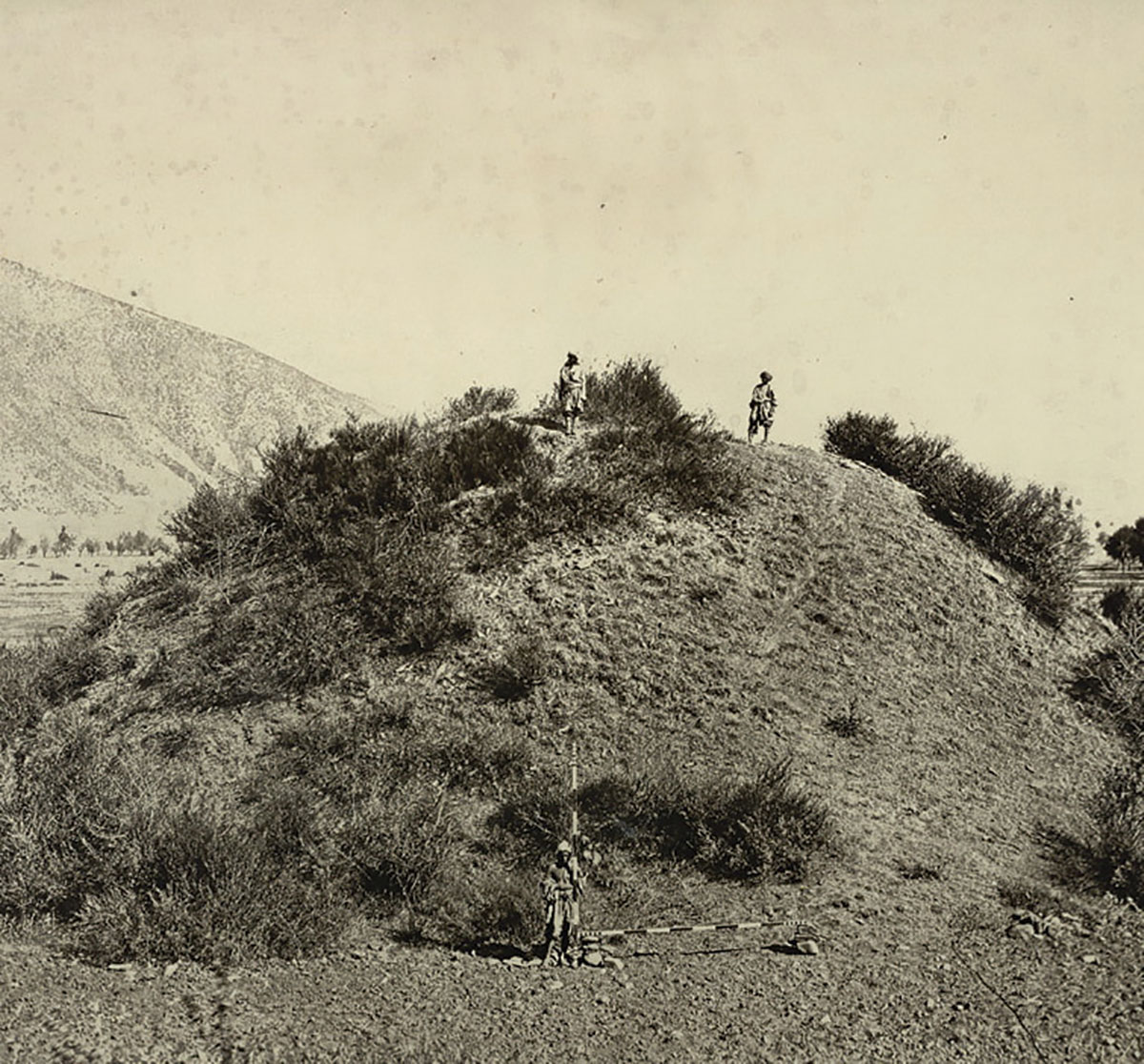
This came to pass 300 years later when Madhyantika came and sat by the lake. The naga king offered to provide him with enough dry land to sit cross-legged. As the naga drained the lake, Madhyantika kept magically expanding his body until all the water was gone. The naga then relocated to a smaller lake, while Madhyantika built 500 monasteries in Kashmir with his magical powers. He subsequently purchased foreign slaves to serve the monasteries. The slaves later became the rulers of Kashmir but were looked down upon by neighbouring kingdoms for their foreign ancestry.
Buddhist Sites
Xuanzang mentions several Buddhist sites around Kashmir, though he does not specify their locations precisely. One monastery housed over 300 monks and contained a stupa holding a tooth relic of Buddha.
Another held a standing image of the bodhisattva Guanyin which would miraculously make its golden body emerge from the statue.
On a mountainside was the monastery where the Buddhist scholar Sanghabhadra composed his treatise. At another hermitage, the scholar Skandhila wrote his commentary on the Abhidharma. Xuanzang states that Buddhist monks and wild animals would make flower offerings at the mountainside shrines as if acting under instruction.
Continuing his journey, Xuanzang travelled southwest from Kashmir through smaller kingdoms like Punach, Rajapura, and Takka. He provides brief descriptions of their geography, people, culture, and state of Buddhism, which he finds to be in decline in these frontier regions. After Takka, he turned eastward and encountered a kingdom called Chinabhukti which had been given its name because a Chinese hostage resided there during Kanishka’s reign. Xuanzang saw this as evidence of Kashmir’s former glory and influence. In the monastery, he studied with the scholar Vinītaprabha.
Famous Buddhist Council
Xuanzang’s writings then shift to the story of Kanishka’s fourth-century council of Kashmir. He relates that the diversity of Buddhist doctrines prompted Kanishka to gather 499 arhats to compile authoritative commentaries on the Buddhist canon. However, the learned monk Vasumitra was initially barred from the council for not having attained arhathood. A challenge led the council to recognise Vasumitra’s superior wisdom and install him as president, accepting his decisions on disputed points. The council compiled 300,000 verses of doctrinal expositions, which were inscribed on copper plates and enshrined in a stupa, guarded by yakshas. Xuanzang states Kanishka bequeathed Kashmir to the Buddhist sangha after this event.
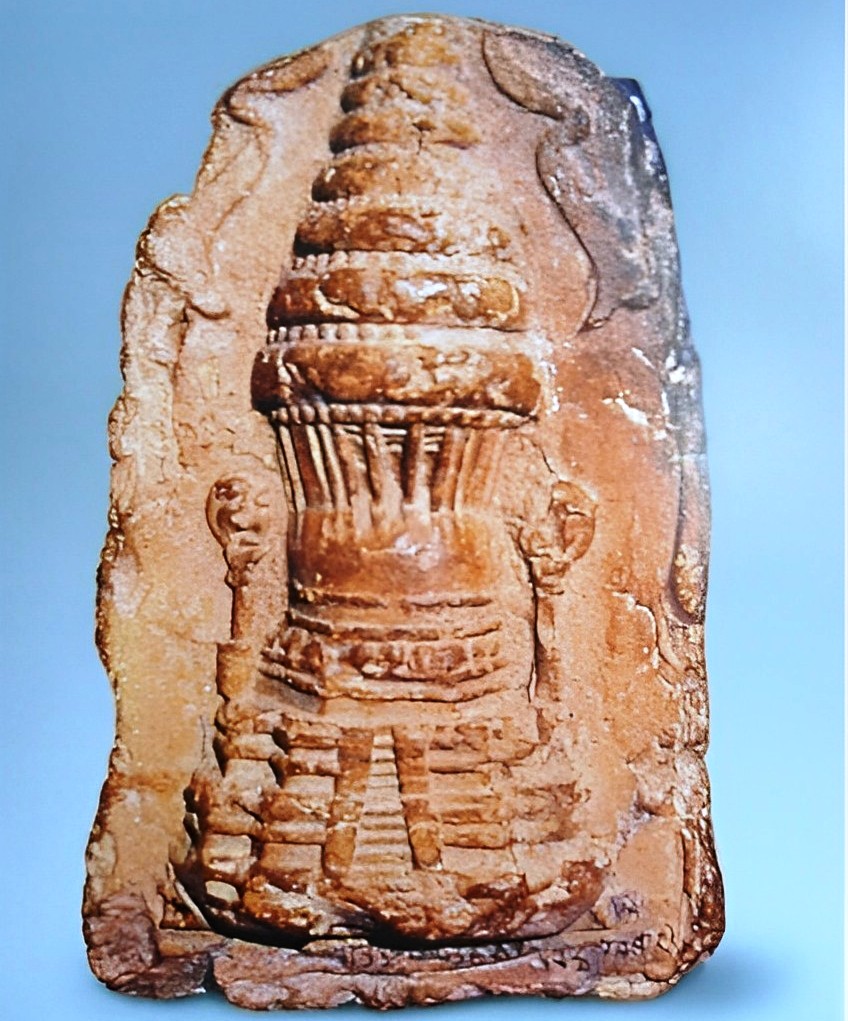
From Kashmir, Xuanzang continued east to the kingdom of Jalandhara. He notes that Buddhist monasteries flourished there, with over 2000 monks studying both Mahayana and Theravada doctrines. This reflects Kashmir’s role as a centre of Buddhist learning with both major schools present. Xuanzang also recounts a legend about a past king of Jalandhara who was appointed by a king of Madhyadesa (central India) to govern Buddhism throughout India after converting from paganism to Buddhism.
Xuanzang spent two years studying and travelling in Kashmir. His writings provide a unique glimpse into Kashmir at that time, just before the rise of Islam. They reveal a prosperous Buddhist civilisation centred around the Valley of Kashmir. Xuanzang’s perspective is that of a devout Buddhist pilgrim marvelling at the Buddhist sites and relics he discovers.
Royal Welcome
When Xuanzang arrives outside the Kashmir capital, he receives a royal escort sent by the king. The king’s relatives greet him with ceremony, providing conveyances to bring him into the city. Xuanzang was housed in the royal monastery upon entering the capital. He depicts the king as a great patron of Buddhism, generously supporting Xuanzang’s studies by appointing monks to attend to him. The king also gave him materials and scribes to copy manuscripts during his two-year stay. Xuanzang portrays the reception in Kashmir’s capital as an extravagant honour, reflecting the kingdom’s prosperity and Buddhist orientation.
While staying in the capital, Xuanzang writes of diligently studying Buddhist doctrines under the tutelage of aged, learned monks. His teacher Sanghavasas is described as seventy years old but highly intelligent and strict in his religious observation. Xuanzang admires Sanghavasas for instructing him thoroughly in various philosophical perspectives and Sanskrit grammar. He presents Kashmir as home to many wise and skilled Buddhist teachers, whose expertise he wishes to absorb through study and debate. Xuanzang highlights himself as gaining a broader understanding of Buddhist thought from Kashmir’s scholars, who possess teachings unavailable in China.
Site of Kanishka’s Council
Buddhism flourished in Kashmir for over a millennium, from 400-300 BC to 500-600 CE. Kashmir was an important centre for spreading Buddhism to Central Asia, East Asia, and beyond.
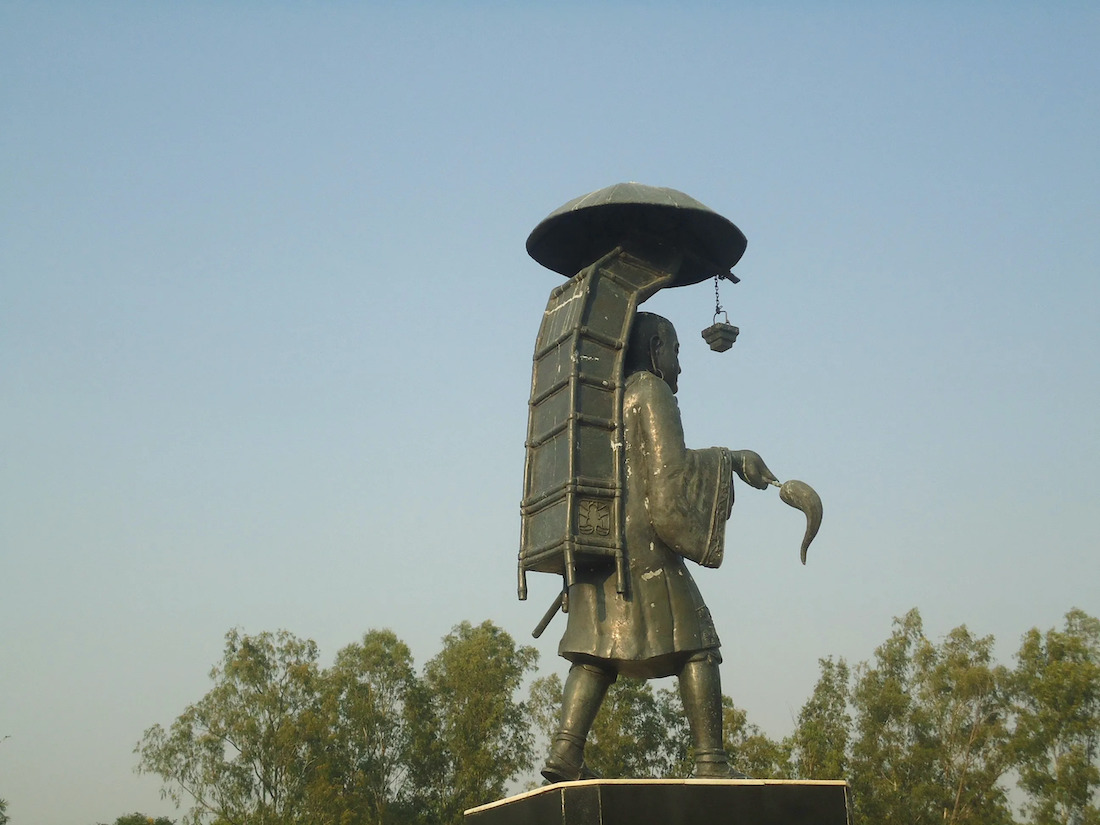
Xuanzang recounts the legend of King Kanishka convening a momentous Buddhist council in Kashmir. He describes Kanishka as a powerful, learned king ruling a vast realm from Gandhara to Central Asia. Disturbed by disunity among Buddhist doctrines, Kanishka gathers 499 enlightened arhats to Kashmir. They labour to compile an authoritative Buddhist canon and commentaries. Xuanzang depicts Kashmir as the site of this definitive gathering that produced an orthodox version of the Buddhist scriptures for posterity. While details of the council can be debated, Xuanzang projects Kashmir as the kingdom where Kanishka chose to assemble Buddhist sages and establish doctrinal unity.
The fourth Buddhist council was convened by King Kanishka to resolve disputes over Buddhist doctrines and produce an authoritative compilation of texts known as the Tripitaka. This council, held at Kundalwan in Kashmir and attended by Buddhist scholars from across Asia, was highly significant in Buddhist history. The Tripitaka texts were inscribed on copper plates that were buried at the Kundalwan site. The decline of Buddhism in Kashmir began after this, as Hindu kings gained power. The location of the buried copper plates has been lost over time.
Almost a decade ago, Kashmir’s cultural historian Muhammad Yusuf Taing argued they are likely buried near the present-day village of Dalwan, based on linguistic evidence and the accounts of historians like Taranath. He also urged authorities to use modern technology to excavate the Kundalwan site and uncover this lost treasure that would be of immense value to Buddhism globally. Taing expressed hope that unearthing the copper plates will lead to a revival of interest in Kashmir’s Buddhist past and heritage.
Hub of Buddhism
Xuanzang’s writings catalogue numerous Buddhist monasteries, stupas, and relics he encountered in the Kashmir region. He describes sites connected to Buddhist luminaries like Upagupta and Ashoka. Xuanzang mentions a monastery sheltering a tooth relic of the Buddha, brought from India. He visits a shrine with a standing image of Guanyin, the bodhisattva of compassion. On a monastery veranda, Xuanzang marvels at the mountain scenery while monks compose Buddhist treatises nearby. He is awed by the cave relics of innumerable enlightened arhats who meditated and passed away in Kashmir’s mountains. Xuanzang portrays himself as a pilgrim discovering relics and locations tied to Buddhism’s origins, underscoring Kashmir’s sanctity.
Xuanzang’s wistful tone describing Kashmir’s lost Buddhist past reflects the declining fortunes of Buddhism by his time. He pointedly notes rulers who destroyed stupas and persecuted Buddhism in Kashmir’s history. Xuanzang presents many Buddhist sites already abandoned and decaying. While honouring Kashmir’s significance in Buddhist history, he laments the damage and disappearance of its once vibrant Buddhist culture. Xuanzang represents himself as a pilgrim gathering the last traces of Kashmir’s Buddhist glory before its final erosion. His detailed record immortalises Kashmir as a pivotal domain in transmitting and nurturing Buddhism during its classical florescence in India.
Beyond Buddhist sites, Xuanzang provides snapshots of everyday life and culture in seventh-century Kashmir. He notes the verdant mango groves and orchards surrounding homes. Xuanzang observes both indigenous and foreign elements, remarking on the Central Asian features of people depicted in a Buddhist fresco. He mentions followers of various schools of Buddhist and non-Buddhist thought living together in Kashmir’s cities. Xuanzang describes a blend of faiths, cultural influences, and diverse peoples, hidden away in Kashmir’s mountain basin. His account captures Kashmir’s atmosphere before its conversion to Islam as an oasis of Buddhism still open to wider currents.
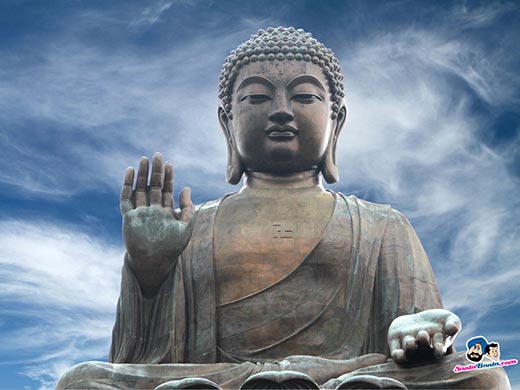
Preface to Change
Within a century of Xuanzang’s visit, Kashmir saw the rise of Hindu kings and gradual inroads from Muslim preachers and migrants. By the fourteenth century, most of Kashmir adopted Islam, supplanting its Buddhist past. Xuanzang witnessed Kashmir at the apex of its classical period but also during its decline from those heights. His meticulous record preserves the lost Buddhist civilisation of Kashmir at its twilight.
Xuanzang portrays its lingering richness and recalls its previous grandeur. But there are omens of Kashmir’s coming eclipse in his descriptions of abandoned temples and transient relics. Xuanzang’s account memorialises the vanished world of Kashmir’s Buddhist age, even as change encroached on its horizon.
Beyond the Buddhist Lens
While Xuanzang’s perspective offers an image of seventh-century Kashmir, his Buddhist pilgrim outlook has inherent limits. He focuses on cataloguing Buddhist sites and relics, providing less insight into everyday life. Xuanzang filters Kashmir through the lens of his faith – a richly Buddhist realm honouring his journey. But this was also a period of coexistence with Hindu and other beliefs, which received short shrift. Xuanzang’s visits to monasteries and temples likely provide only glimpses of the complete picture. We must fill out his selectively religious panorama with other sources and perspectives.
Though steered by Buddhist reverence, Xuanzang maintains an explorer’s observational spirit and adaptability. At times, his keen geographical and cultural details go beyond Buddhist matters. He analyses landforms, climate, dress, agriculture, language, and social norms in his descriptions. Xuanzang displays courage and persistence in reaching Kashmir through dangerous mountain terrain. His learned, investigative nature emerges alongside religious motivations. While not an unbiased account, Xuanzang’s record has fundamental value for the period in portraying Kashmir as a land, not just a Buddhist relic.
As an invested pilgrim, Xuanzang often transmits Buddhist legends about Kashmir’s past. Many serve to connect Kashmir to Buddha’s life and the origins of Buddhism. Xuanzang reports tales of Buddha prophesying Kashmir’s significance before his death. Other legends feature arhats and kings establishing Buddhism in Kashmir in line with the Buddha’s wishes. Xuanzang draws on myths crediting Kashmir with events like Madhyantika defeating the naga spirit of the lake. Through legends, Xuanzang casts Kashmir as playing an important role in early Buddhist history following the Buddha’s Parinirvana. While legends reflect imagination and ideology more than fact, they convey Kashmir’s perceived centrality and reputation among Buddhists.
Xuanzang’s account follows conventions of medieval travel writing by blending observation with myth and legend. He adapts the theoretical framework that Buddhist authorities foretold Kashmir’s prominence. Xuanzang structures his account around visits to sacred Buddhist sites across the land. He mixes miraculous tales with local colour and empirical details. While today’s scholars differentiate history from legend, Xuanzang integrates them fluidly as equally meaningful. His religious worldview and narrative style must be appreciated to contextualise his portrayal of Kashmir. Xuanzang aims not merely to record but to celebrate Kashmir’s Buddhist heritage through literary travelogue devices.
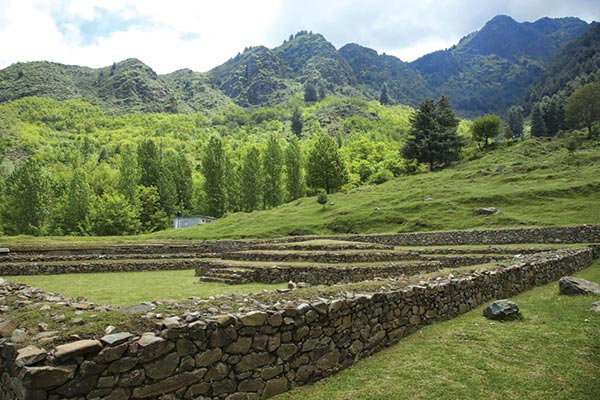
Biography of a Vanished Realm
Xuanzang’s account of Kashmir stands as the biography of a disappeared world. His chronicle preserves key memories and contours, accrued through Kashmir’s pivotal early role in nurturing Buddhism. Xuanzang keeps alive figures like Madhyantika and Kanishka who shaped Kashmir’s trajectory and identity. He memorialises the learned monks and the culture that flourished behind the ring of mountains. Xuanzang pays homage to Kashmir’s stupas, monasteries, and relics that embodied its spirit. His meticulous record immortalises Kashmir’s essential character as a hidden Buddhist land in the final centuries before sweeping change triggered a shift. For this irreplaceable glimpse into Kashmir’s past, Xuanzang remains an invaluable guide.
Xuanzang’s record established Kashmir as a prosperous Buddhist kingdom in the seventh century and a centre of Buddhist learning. It was semi-isolated by its mountainous geography but occupied an important position linking India to Central Asia. Xuanzang highlights Kashmir’s prestige through legends about figures like Madhyantika and Kanishka. He values Kashmir’s production of Buddhist texts but shows that it was not the sole centre. Xuanzang portrays himself as accessing Kashmiri Buddhist wisdom to bring back to China, reflecting his pilgrimage’s mission. While limited in his travels through Kashmir, Xuanzang provides glimpses of Buddhism thriving in Kashmir alongside indigenous faiths before the rise of Islam. His account is an invaluable record of a pivotal but little-known period in Kashmir’s religious history.
Tail End
In the centuries after his death, Xuanzang’s journey to India took on mythic proportions in the popular imagination. Tales arose of the monk confronting demons and monsters along the way, aided by fantastical companions like a monkey and pig. Xuanzang became a supernatural figure associated with magic and spiritual powers beyond his historical role as pilgrim and scholar. His accurate record of places and cultures gave way to allegorical legends that have become better known than the man himself.
Yet, while Xuanzang did document exotic lands and peoples seemingly at the edge of the known world, his account is restrained and empirical at the core. He writes to enlighten readers on real regions little understood in China, not to regale with bizarre tales or exaggerate dangers faced. Xuanzang portrays himself as a humble seeker of wisdom, not a hero battling supernatural foes. His matter-of-fact relation of the landscapes, cities, faiths, and histories along the Silk Road reveals Xuanzang as an intrepid explorer but also a meticulous, rational observer.
Above all, Xuanzang’s monumental record preserves for posterity a detailed eyewitness view of cultures and kingdoms that have long since vanished. His text documents the existence of past peoples and places that would otherwise remain obscure. While legends transform Xuanzang into a mystical figure, his account is fundamentally one of history, geography, and ethnography. It provides an indispensable record of Central and South Asia when Buddhism still thrived, free of the hyperbole and magic later associated with the pilgrim monk of legend. For all the wondrous myths that now envelop him, Xuanzang’s accomplishment remains his factual chronicle of a medieval world in transition.
















Excellent